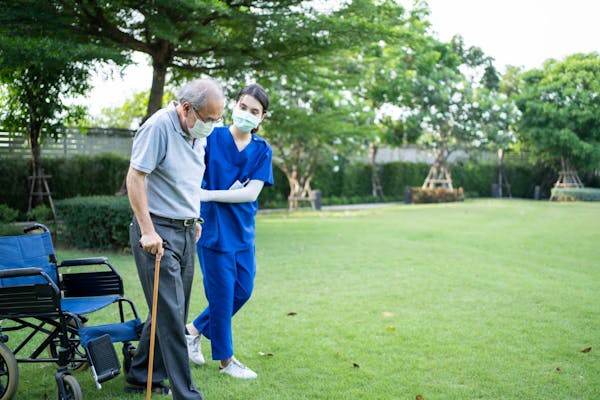Community reintegration is a paramount objective in physical therapy, supported by a robust body of evidence indicating its significant impact on patients’ overall well-being. This approach acknowledges the importance of utilizing evidence-based practices to optimize rehabilitation outcomes and enhance patients’ quality of life.
1. Evidenced-Based Assessment: The process commences with a comprehensive assessment of the patient’s physical status, encompassing validated tools and measurements. Instruments such as the Functional Independence Measure (FIM) or the Timed Up and Go Test are commonly employed to gauge baseline functionality and mobility.
2. Customized Rehabilitation Plans: Research studies consistently emphasize the effectiveness of individualized exercise programs tailored to a patient’s specific impairments and functional goals. Evidence supports the implementation of progressive resistance training to improve strength and mobility (American College of Sports Medicine, 2009).
3. Assistive Devices: Evidence-based guidelines advocate for the judicious use of assistive devices when necessary. For instance, a systematic review by Perera et al. (2014) demonstrated that walking aids significantly reduce the risk of falls in older adults. Recommending and teaching the use of assistive devices such as canes, walkers, or wheelchairs when necessary to enhance mobility and independence.
4. Pain Management Strategies: Addressing pain and discomfort through techniques like manual therapy, modalities, and education on proper body mechanics.
5. Patient Education: Offering education on injury prevention, adaptive techniques, and community resources
6. Environmental Adaptations: Collaborating with patients to identify and overcome environmental barriers that may impede community participation. This could include suggesting home modifications or providing guidance on accessible transportation options.
7. Community Integration Exercises: Gradually reintroducing patients to community settings through supervised outings or group activities have shown success in studies, with supervised outings or group activities aiding in improving patients’ confidence and social participation (Leung et al., 2015).
8. Progress Monitoring: Continuously assessing and adjusting the rehabilitation plan based on the patient’s progress and feedback.
In conclusion, an evidence-based approach in physical therapy underscores the importance of tailoring interventions to the best available evidence, thus optimizing the effectiveness of community reintegration strategies. By integrating research findings and clinical expertise, physical therapists can provide the highest standard of care to individuals seeking to regain independence and participation within their communities.

